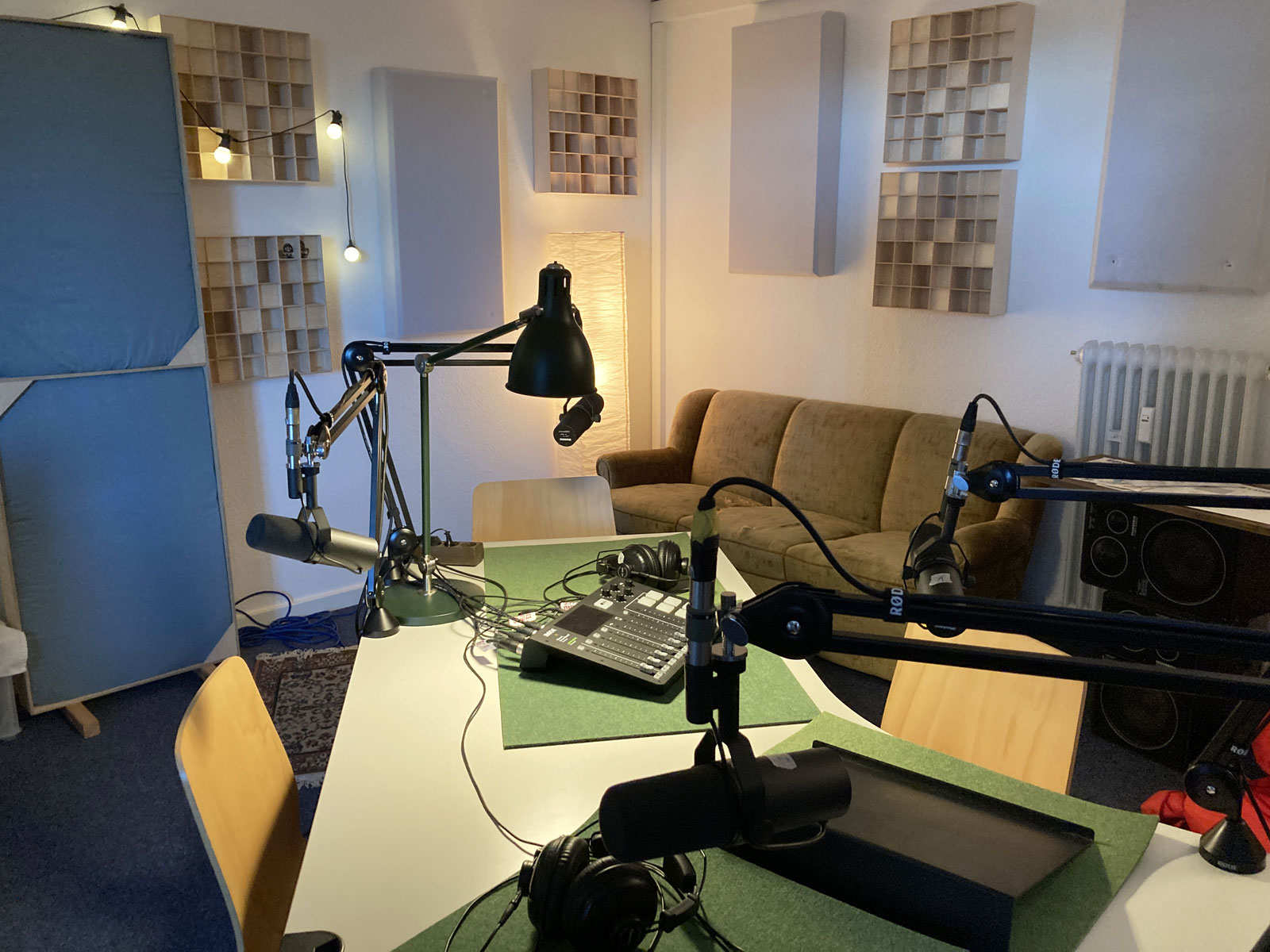Podcast recording studio – tips and tricks

The recording studio
A podcast recording studio has been set up in the StudiHaus at Wendenring 1. All TU members can borrow the key for a few days to record a podcast or similar.
It is primarily a recording studio. Two Neumann studio monitors are available for post-production. However, you would need to bring your own DAW. There is currently no technical support, only technically informed users can use the podcast studio. - The recording studio can be used after a short introduction. So please allow some lead time.
Reservations
You can request the recording studio via Sandkasten sharing.
Existing technology
You can find all the information on the podcast recording studio page.
Tips and tricks in the recording studio
We have put together a few tips to help you get a good result from your recording:
Before recording
- Familiarize yourself with the equipment before the actual recording. Try it out at your leisure and make test recordings.
- Position the microphone optimally. It should be approx. 10-15 cm away from your mouth. It can also be pointed at the mouth from the side, at an angle, so that eye contact between the interviewees remains free. :-)
- The position of the microphone should not be changed during the recording, otherwise the sound may be distorted.
- Switch off the ceiling lighting! **Unfortunately the fluorescent tubes “hum”.
- Switch all cell phones to flight mode and take off any watches, jewelry, etc. that could cause noise.
- Create a cozy atmosphere in the room. Heat the room beforehand, create a pleasant light with the floor lamp, table lamp and fairy lights in the room. The conversation will only go well if everyone involved feels comfortable.
- Provide non-carbonated water** for everyone. - With carbonated drinks, you may have to burp and coffee, cola or similar will make your mouth sticky and you will easily make “smacking noises” when talking.
During the recording
- Listen carefully to what you are recording with closed headphones. Pay attention to any background noise, changes in the sound of the voice, etc. and find a remedy if necessary. (Tip: A third person can also be assigned to this task, who is solely responsible for checking the sound and recording level).
- Always pay attention to the level meter, never adjust the recording level to your ears. The average recording level should be around -10 dBFS (where you see the small line on the level scale). - If the level exceeds 0 dBFS during recording, the display will light up red. Please pause briefly, correct the pre-amplification in the corresponding channel and repeat the part of the call.
- Make sure your recording is complete and don’t interrupt it. It’s better to record too much than too little.
- Document every recording so that you can find your way around more quickly later. Or record an intro for yourself at the beginning, which you can then edit out later. (“Podcast recording with Lena Sandfrau on 12.12.2022 on the topic “Tips and tricks in the recording studio”).
- Record the silent room for approx. 15 seconds, i.e. the room tone. - Silent means really silent! - Leave the microphone levels at the same level as you have them when recording and it is best to send everyone out. The room sound must not contain any noises such as breathing, rustling clothes, voices outside the door, clock ticking, etc.
- The surround sound is helpful if you want to cut out noise in post-production (post-editing). For example, you can simply replace “smacking noises” with the surround sound without the cut being audible. You can also use it to adjust the length of pauses to achieve a good flow of the conversation.
- Note the Copyright. Be careful with music in the background or similar.
After the recording
- Use the file format WAV and not MP3 for the recordings and the subsequent export and record in 24 bit, 44.1 kHz uncompressed (.wav). To export and convert the files from the SD card, you will need the free program from Rode.
- Make enough backups of the data!
- Clean up the recording studio and format the SD card for your successors. Always lock the door, switch off the lights and turn down the heating.
Have fun in the podcast studio!